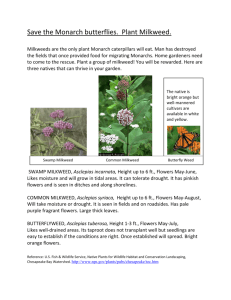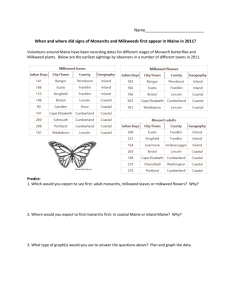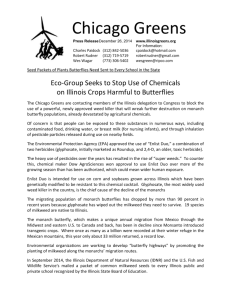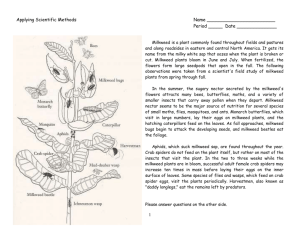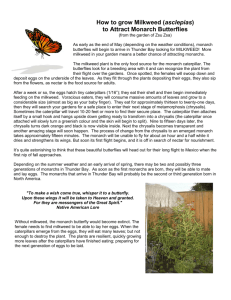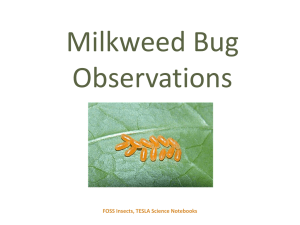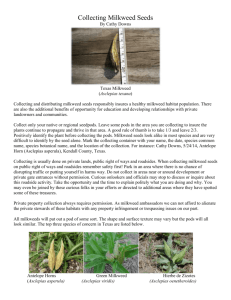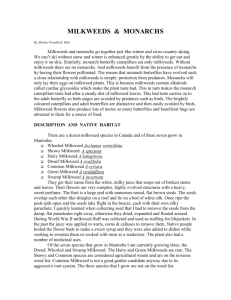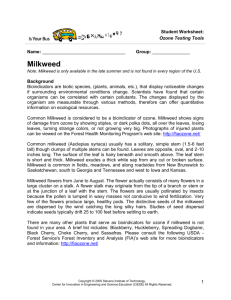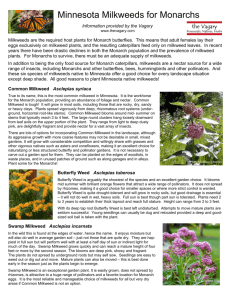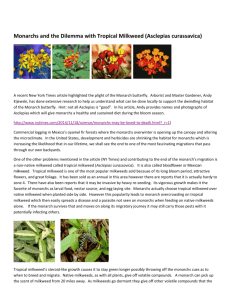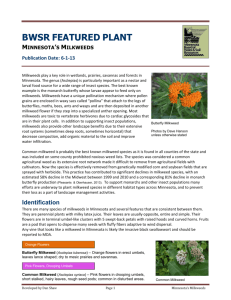Milkweed for Monarchs
advertisement
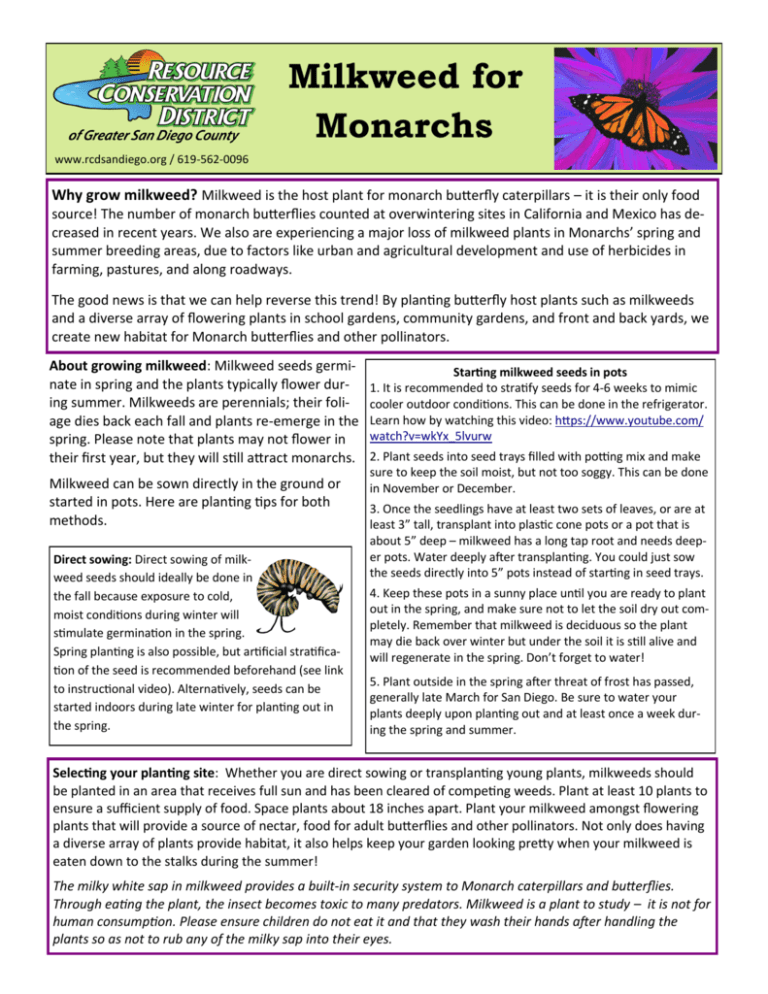
Milkweed for Monarchs www.rcdsandiego.org / 619-562-0096 Why grow milkweed? Milkweed is the host plant for monarch butterfly caterpillars – it is their only food source! The number of monarch butterflies counted at overwintering sites in California and Mexico has decreased in recent years. We also are experiencing a major loss of milkweed plants in Monarchs’ spring and summer breeding areas, due to factors like urban and agricultural development and use of herbicides in farming, pastures, and along roadways. The good news is that we can help reverse this trend! By planting butterfly host plants such as milkweeds and a diverse array of flowering plants in school gardens, community gardens, and front and back yards, we create new habitat for Monarch butterflies and other pollinators. About growing milkweed: Milkweed seeds germinate in spring and the plants typically flower during summer. Milkweeds are perennials; their foliage dies back each fall and plants re-emerge in the spring. Please note that plants may not flower in their first year, but they will still attract monarchs. Milkweed can be sown directly in the ground or started in pots. Here are planting tips for both methods. Direct sowing: Direct sowing of milkweed seeds should ideally be done in the fall because exposure to cold, moist conditions during winter will stimulate germination in the spring. Spring planting is also possible, but artificial stratification of the seed is recommended beforehand (see link to instructional video). Alternatively, seeds can be started indoors during late winter for planting out in the spring. Starting milkweed seeds in pots 1. It is recommended to stratify seeds for 4-6 weeks to mimic cooler outdoor conditions. This can be done in the refrigerator. Learn how by watching this video: https://www.youtube.com/ watch?v=wkYx_5lvurw 2. Plant seeds into seed trays filled with potting mix and make sure to keep the soil moist, but not too soggy. This can be done in November or December. 3. Once the seedlings have at least two sets of leaves, or are at least 3” tall, transplant into plastic cone pots or a pot that is about 5” deep – milkweed has a long tap root and needs deeper pots. Water deeply after transplanting. You could just sow the seeds directly into 5” pots instead of starting in seed trays. 4. Keep these pots in a sunny place until you are ready to plant out in the spring, and make sure not to let the soil dry out completely. Remember that milkweed is deciduous so the plant may die back over winter but under the soil it is still alive and will regenerate in the spring. Don’t forget to water! 5. Plant outside in the spring after threat of frost has passed, generally late March for San Diego. Be sure to water your plants deeply upon planting out and at least once a week during the spring and summer. Selecting your planting site: Whether you are direct sowing or transplanting young plants, milkweeds should be planted in an area that receives full sun and has been cleared of competing weeds. Plant at least 10 plants to ensure a sufficient supply of food. Space plants about 18 inches apart. Plant your milkweed amongst flowering plants that will provide a source of nectar, food for adult butterflies and other pollinators. Not only does having a diverse array of plants provide habitat, it also helps keep your garden looking pretty when your milkweed is eaten down to the stalks during the summer! The milky white sap in milkweed provides a built-in security system to Monarch caterpillars and butterflies. Through eating the plant, the insect becomes toxic to many predators. Milkweed is a plant to study – it is not for human consumption. Please ensure children do not eat it and that they wash their hands after handling the plants so as not to rub any of the milky sap into their eyes.
